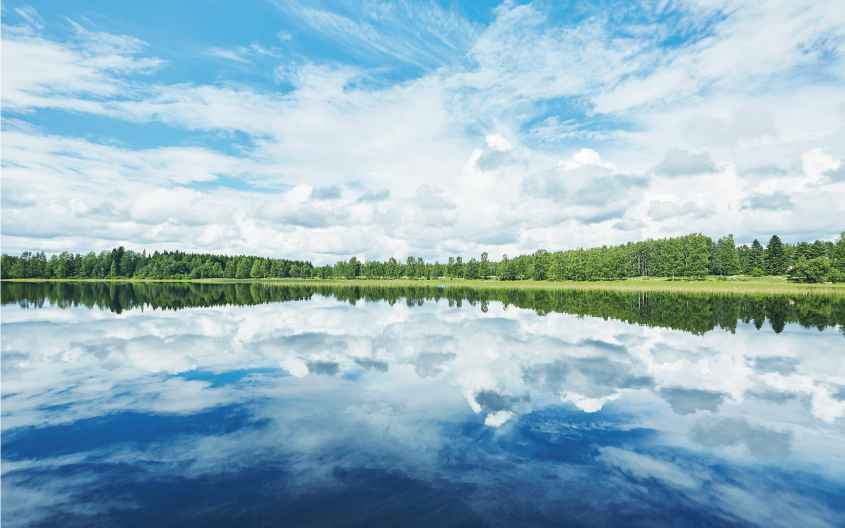[Found MUJI] Suomi Finland

Suomi Finland
New launch Suomi Finland Series, now available at MUJI Plaza Singapura #01-10.
Forest as far as the eye can see, dotted with lakes here and there. The flat lines of the landscape unfold outside the car window–all skies and forests.
About 80% of the Finnish terrain is made up of forests and lakes, with the land people living on making up the remaining 20%. The relationship with the surrounding natural environment is thus part and parcel of daily life for the people of Finland. During the midnight suns of summer, the Finnish move to cottages outside the city to delight in the forests with family and friends, forgetting about the constraints of time. During the long, dark winters, homes are lit with candles, and leisurely hours are spent in conversation or reading.
The Finnish name for the country is ‘Suomi’. The Suomi people live close to nature and know ways in order to enjoy living there. The sauna, for example, is an essential part of Finnish life. The hut for a traditional smoke sauna takes hours to heat. While this is taking place, sauna-goers prepare bundles of white birch leaves and branches called vihta. The sauna room is ready when smoke from the wood stove begins to escape from the small vent. In the sauna room, the faint scent of burnt wood lingers, and everyone sings together in close companionship. “Löylyä lissää! Löylyä lissää! Lissää löylyä kiukaaseen!!” (“More steam! More steam! Throw more steam on the stove!”) While gently hitting their bodies with a vihta bundle, they work up a great sweat. When the heat becomes too much, everyone would jump into a lake or river to cool off and hydrate by drinking berry juice or beer while sitting in front of the sauna hut indulging in friendly conversation.
Sitting amid the coniferous trees of the forest, the Finnish people chat with family and friends regardless of age and gender. This is what it means to live as a part of nature.
Find out more about the launch via below link!
Suomi Finland Booklet(PDF:1.63MB)
Berries
In Finland, anyone walking through the forests can pick nature’s bounties such as fruits and mushrooms which are readily available, as people believe in the right to share nature’s blessings. In summer, berries are picked and eaten for breakfast and dessert. They are frozen whole or made into homemade jams and juices, which are kept in storage containers so these can be enjoyed even during the long winters.


Karjalanpiirakka
Originally from the Karelia region, Karjalanpiirakka pies are now eaten throughout the country. The dough, made from rye, wheat flour, salt and water, is kneaded and rolled out into palm-sized oval shapes using a rolling pin made of white birch. Milk porridge fillings are placed in the centre of the dough; the sides are folded to the centre and crimped before being placed in the oven. Straight out of the oven, the piirakka are brushed with a mixture of melted butter and hot water for a golden glaze. The pies are eaten with munavoi, a mixture of butter and hardboiled eggs coarsely mashed while still hot.


Designed for the User
Simple, easy-to-wash forms that are stackable to conserve space—traditional Finnish tableware were designed to serve minimal specific functions, and families would purchase new items as their lifestyles change.
In an era when an item, like a soup bowl, was typically designed to serve a single function, Finnish designer Kaj Franck designed pieces that could be used for multiple purposes. It took time before the Finnish people accepted the ideas of simplicity and versatility in tableware, but as the years passed and lifestyles changed, today’s multipurpose pieces became the standard.


Lapua Weavers
On the banks of the Lapua River stands a weaver’s mill, which at more than 100 years old, 17 looms are still in continuous operation. Located near the local library and museum, people from the community often stop by to sit and chat at the mill. This is a family mill now run by Esko and Jaana Hjelt, the fourth generation of the same family. Their teenage sons are around to help during their summer vacations—a sign that the warmth of this small family-run business will continue on.


Jokipiin Linen
At the red brick linen mill, weavers craft towels and mats made mostly from linen for use in Finnish saunas. The mill also fills numerous customised orders from hospitals and other public institutions. Even the towels used in the sauna at the Parliament House are made by this factory. This adds to the fact that there actually is a sauna there is itself uniquely Finnish.


Everyday Metalware
Metal is used to make everyday items from large measuring cups used in the markets to ladles and buckets used in the sauna and containers to hold mosquito coils in the forest. At the metalsmithing workshop inherited from his father, Esa Åkerman makes even all of the tools used to craft these items himself. At the peak of the industry, the area was home to around 50 small metalsmiths, but today this number has fallen to just two. Each metal item is crafted by hand and put to practical everyday use.


Pirtanauha Weaving
Pirtanauha pieces are worn with traditional Finnish clothing. “Pirta” refers to a comb-like tool used in weaving, while “nauha” refers to a strap or cord. National costumes in Finland are adorned with an array of richly diverse patterns that vary by region and are kept alive in the traditional local patterns still seen today. In some regions, the traditional dress features a decorative key hanging from the waist which symbolises the role of protecting the household.


Woven Pine Basket
These pine baskets function as shopping baskets, magazine racks, closet storage, or for receiving newspaper deliveries. Years of use would see the baskets gradually turn into a deeper caramel colour.

